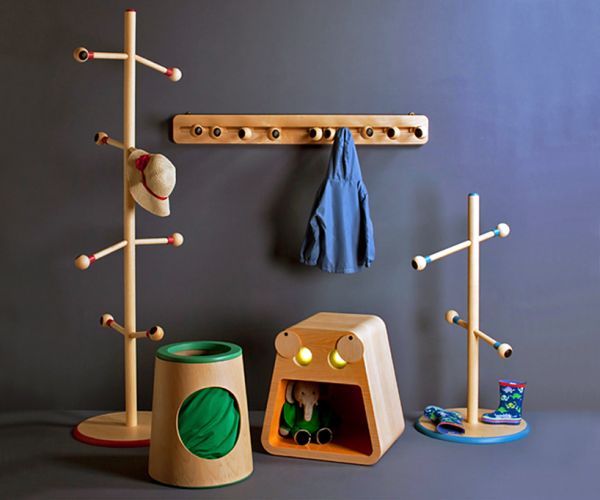
Toys are a child’s dearest companions. A child’s world revolves around his or her toys and if the toys are thoughtfully made, they can make a child learn a lot of things and concepts, which further turn out to be the stepping stone of a child’s personality. ‘Little Helper’s’ furniture collection designed by Italian designer Elena Nunzatia qualifies as an educational set of toys and furniture for children. The toys are not only educational, but are quite fun too. Nunzatia designed the toys and furniture as a part of her degree project, at the University of the Arts, London .
Each toy has its own quality and an underlying meaning. For example, in a toy named paddy coat rack collection, the knobs meant for hanging clothes are designed as eyes and they can be spun around easily by the kids. In the same way, in an another toy, which is basically a rail model for hanging clothes, each and every hook can be slid from side to side, making it a fun and learning experience.
Likewise, on the coat stand, kids can adjust the rod’s position through the middle pole.The laundry bag is named as ‘dirty clothes eater’. This laundry bag has a lycra sack, in which dirty clothes are stacked until its tummy is fully loaded. Through this way, children will quickly realize when they need to assist their parents in washing clothes. Moving on, a bedside table is named as ‘Melvin the magic bedside table’. The eyes of this table can be rotated easily by kids, thereby revealing the lamps installed within the toy.
Nunzatia’s purpose of making these toys based furniture range was to correlate with her project, which wanted to examine current families and the mutual relationship of the family members, while also trying to analyze how kids engage with their domestic environment and parents for the purpose of turning mundane things of life into fun activities. The toys will help children in sharpening their imagination while exploring the available spaces and at the same time allow parents to build a bridge between their needs and their kids’ needs.
Via: DesignBoom




